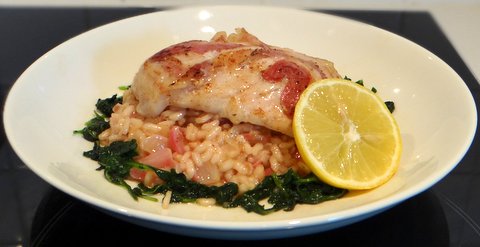
Foie Gras Sous-vide with Sauternes, Beetroot and Roquefort
Georges Pralus of Restaurant Troisgros in Roanne, France, discovered that foie gras cooked sous-vide kept its original appearance, did not lose excess amounts of fat and had better texture. This was a major step in the development of sous-vide techniques for the restaurant and home kitchens. Although I’ve been cooking sous-vide, I had not cooked foie gras sous-vide yet. Since it was such a breakthrough dish, I felt I had to give it a try. The combination of foie gras with the botrytis dessert wine sauternes is famous, and since sauternes is also good with roquefort and roquefort is good … Continue reading Foie Gras Sous-vide with Sauternes, Beetroot and Roquefort




























